China’s Photovoltaic Power Stations from Space
China is the world’s renewable powerhouse, accounting for almost 60% of new renewable capacity (International Energy Agency, Renewables 2023 report). As a crucial part of the renewable energy sector, China’s photovoltaic (PV) industry has rapidly developed from scratch, continuing to inject "Chinese momentum" into global green development. The diverse applications of China’s PV industry—ranging from centralized PV stations in arid regions of the Northwest to distributed rooftop PV systems in urban and rural areas—not only demonstrate China’s commitment to addressing climate change and advancing global sustainable development goals but also invigorate local economies.
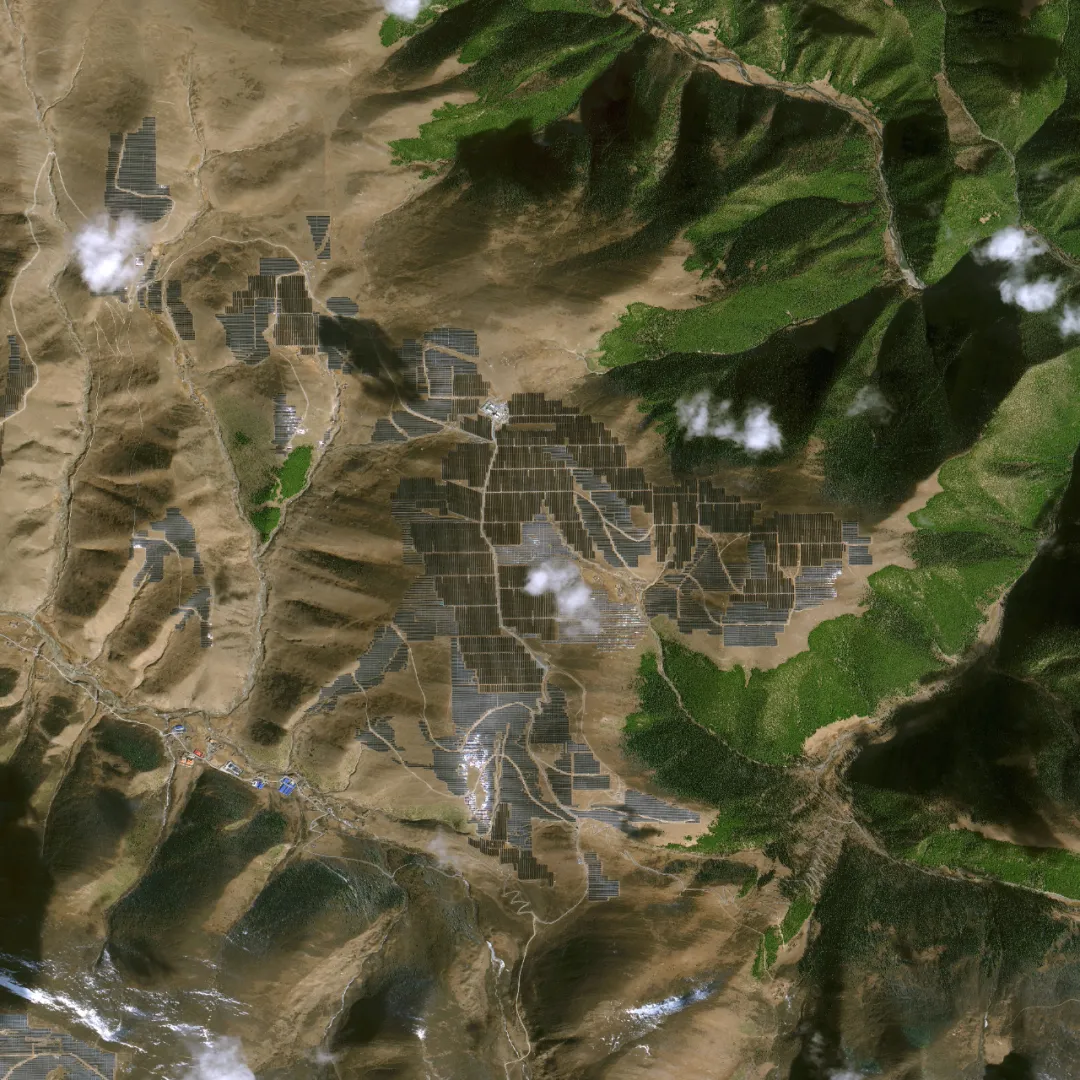
Yalong River Kela PV Power Station. (Data Source: GF-2 Satellite; Imaging Date: December 3, 2023; Image by AIR)
Located in Kela Township, Yajiang County, Tibetan Autonomous Prefecture of Ganzi, southwest China’s Sichuan Province, at an average altitude of 4,600 meters, it officially started grid-connected power generation on June 25, 2023. It is the world’s first 1-gigawatt-class water-solar hybrid power station and currently the largest and highest-altitude hybrid PV power station globally.
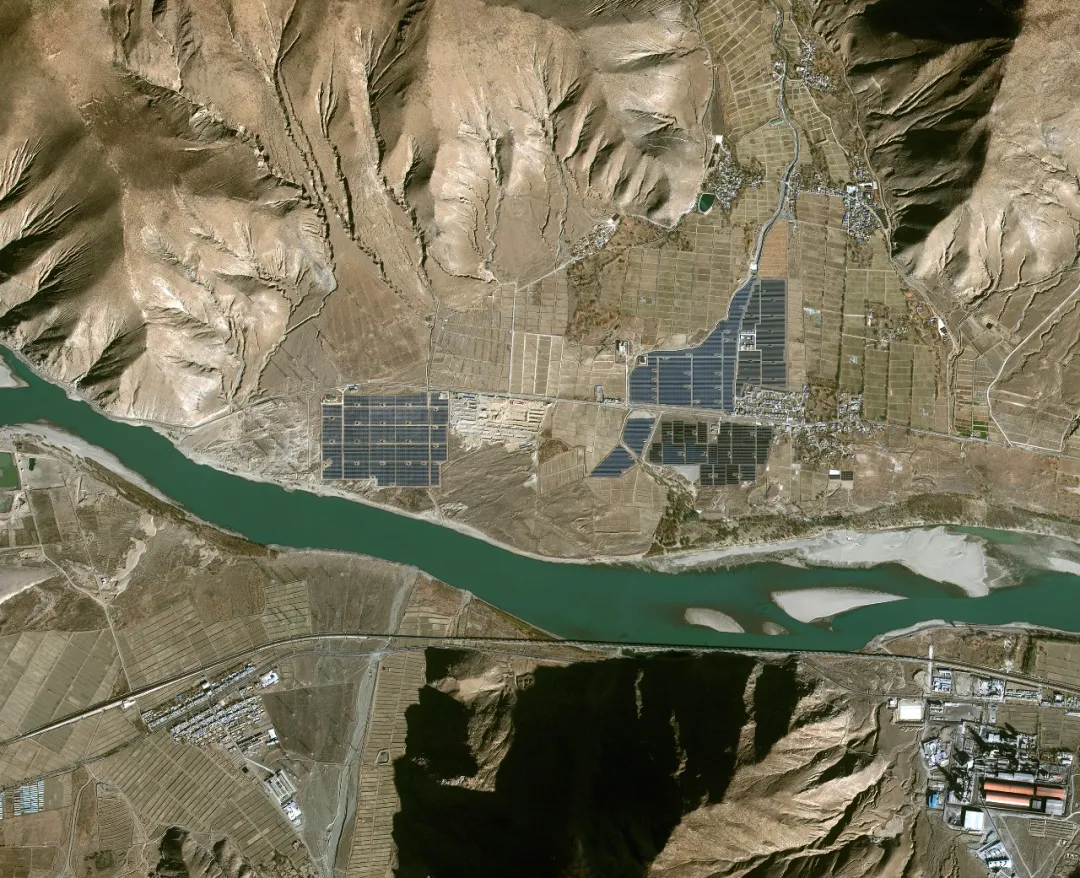
Caipeng PV Power Station in Xizang. (Data Source: GF-2 Satellite; Imaging Date: January 23, 2024; Image by AIR)
Located in Naidong District, Shannan City, Southwest China’s Xizang Autonomous Region, at altitudes ranging from 4,994 to 5,100 meters, it is one of the highest-altitude PV projects in the world. Officially commissioned on December 30, 2023, it can supply electricity to nearly 4,000 households annually, contributing significantly to sustainable development and environmental protection in Xizang.
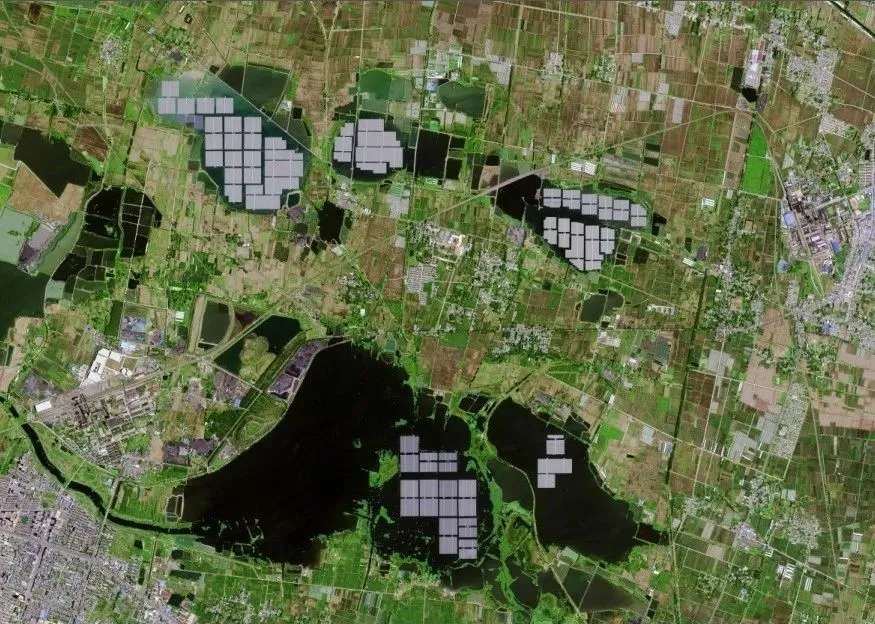
Huainan Floating PV Power Plant. (Data Source: GF-2 Satellite; Imaging Date: July 5, 2023; Image by AIR)
Located in Panji District, Huainan City, Anhui Province, this plant was built on a water area created by ground subsidence from coal mining. With an installed capacity of about 150 MW, it is one of the largest floating PV power stations worldwide.
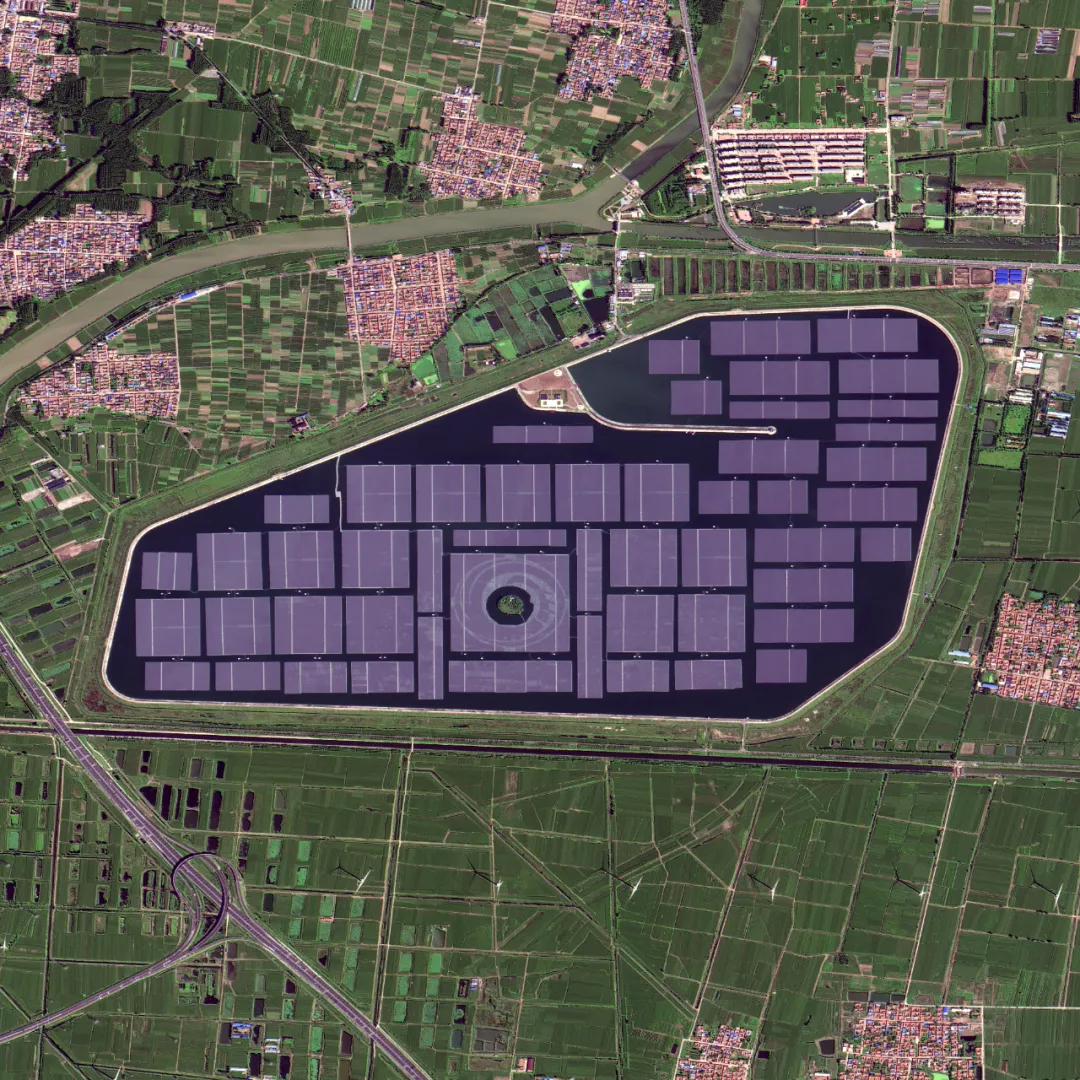
Dingzhuang Floating PV Power Station in Dezhou. (Data Source: GF-2 Satellite; Imaging Date: September 16, 2024; Image by AIR)
Located in Dingzhuang Town, Lingcheng District, Dezhou City, east China’s Shandong Province, it was completed in December 2021 with an installed capacity of 320 MW, making it one of the largest floating PV power stations in the world. The station maximizes land use, saving nearly 8,000 acres of construction land while implementing an integrated“wind-solar-storage”system.
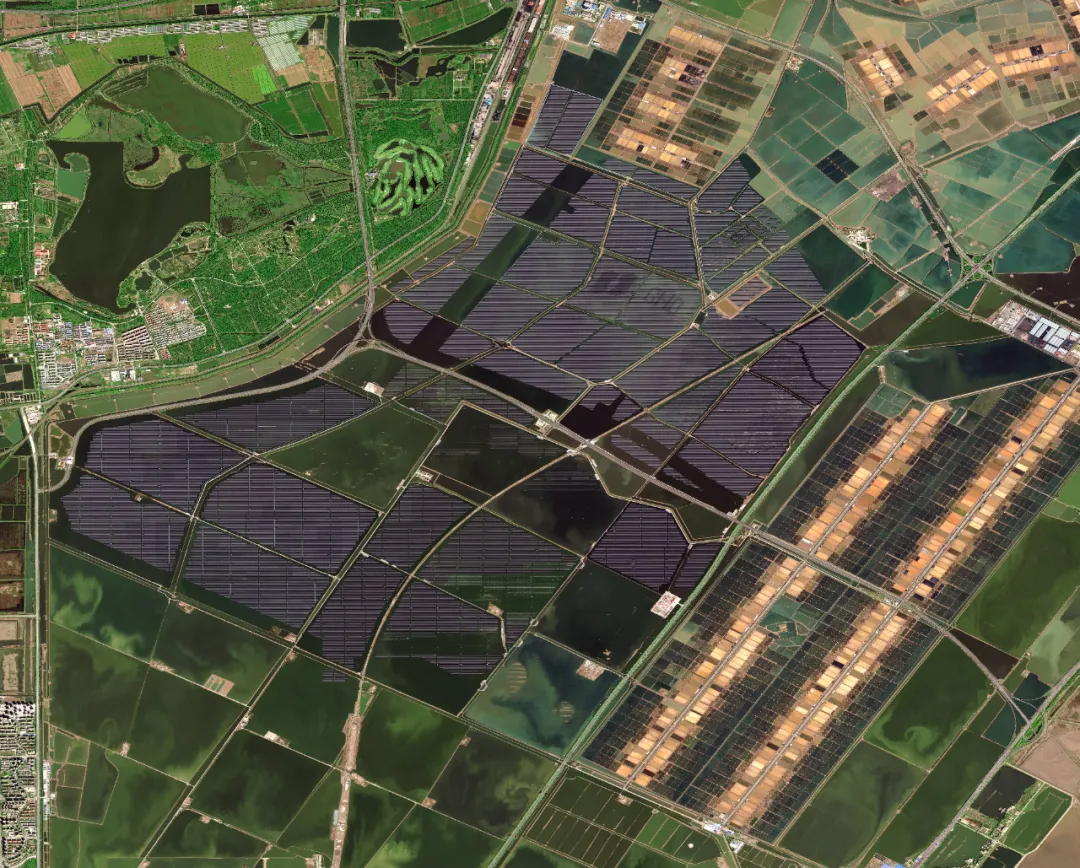
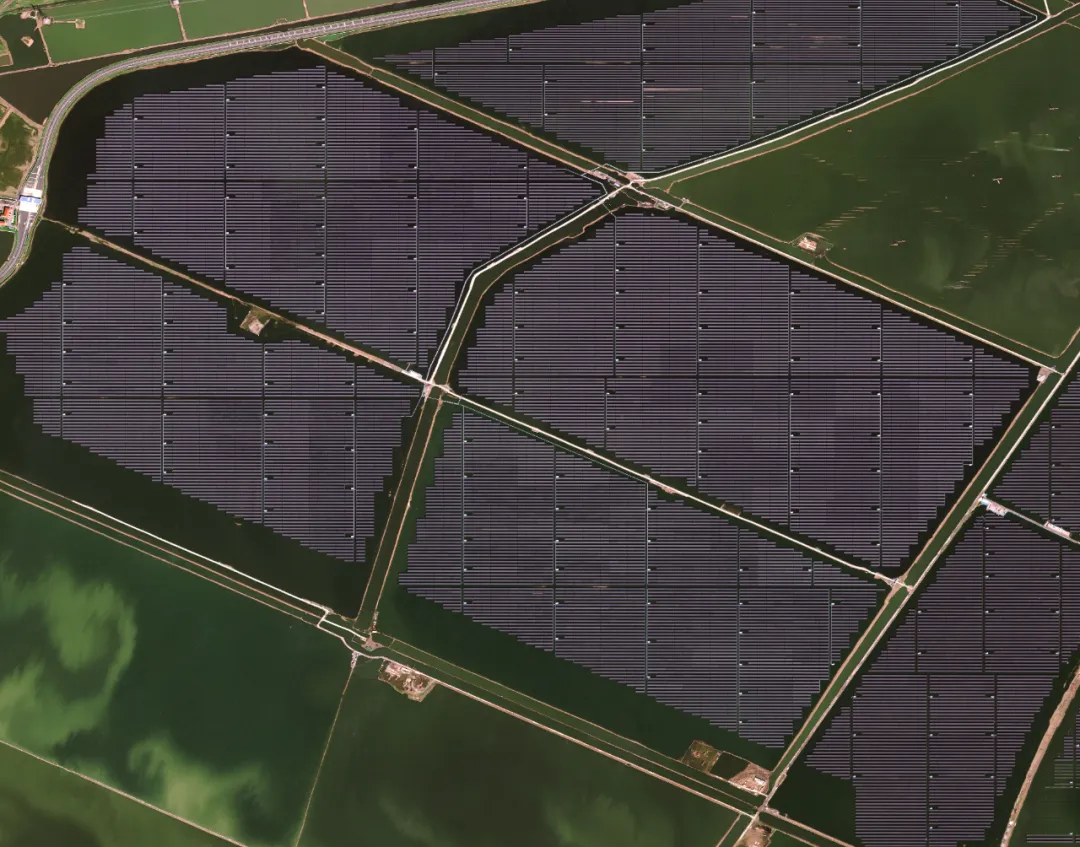
Haijing Salt-Solar Hybrid PV Power Station in Tianjin. (Data Source: GF-7 Satellite; Imaging Date: September 21, 2024; Image by AIR)
Located in Tianjin’s Binhai New Area, it is one of the largest single salt-solar hybrid PV projects worldwide. The plant combines electricity generation on water, brine production for salt extraction, and underwater aquaculture, using double-sided PV panels to enhance efficiency.
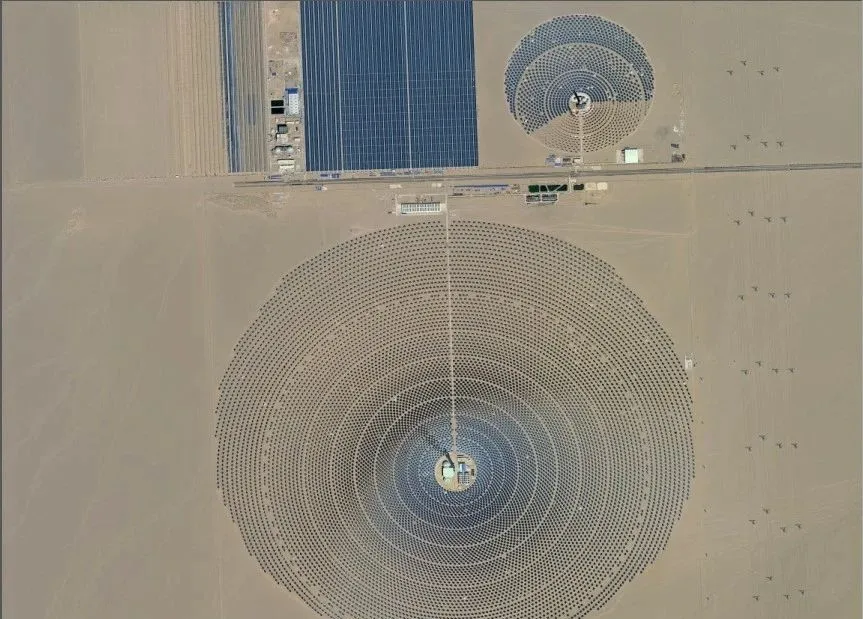
Dunhuang Molten Salt Tower Solar Power Plant. (Data Source: GF-7 Satellite; Imaging Date: August 27, 2021; Image by AIR)
Located on the Gobi Desert near Dunhuang City, northwest China’s Gansu Province, it is currently the tallest molten salt tower CSP (concentrated solar power) station globally, with the largest mirror field area. The plant’s completion marked China’s breakthrough in achieving large-scale CSP technology.

Longyangxia Water-Solar Hybrid PV Power Station. (Data Source: HJ-2 Satellite; Imaging Date: July 4, 2023; Image by AIR)
This unique water-solar hybrid system consists of the Talatan PV Station in Gonghe County, Qinghai Province in northwestern China, and the Longyangxia Hydropower Station on the mainstream of the Yellow River to its east. In June 2022, it won a Guinness World Record for the largest installed capacity for a hybrid power station.
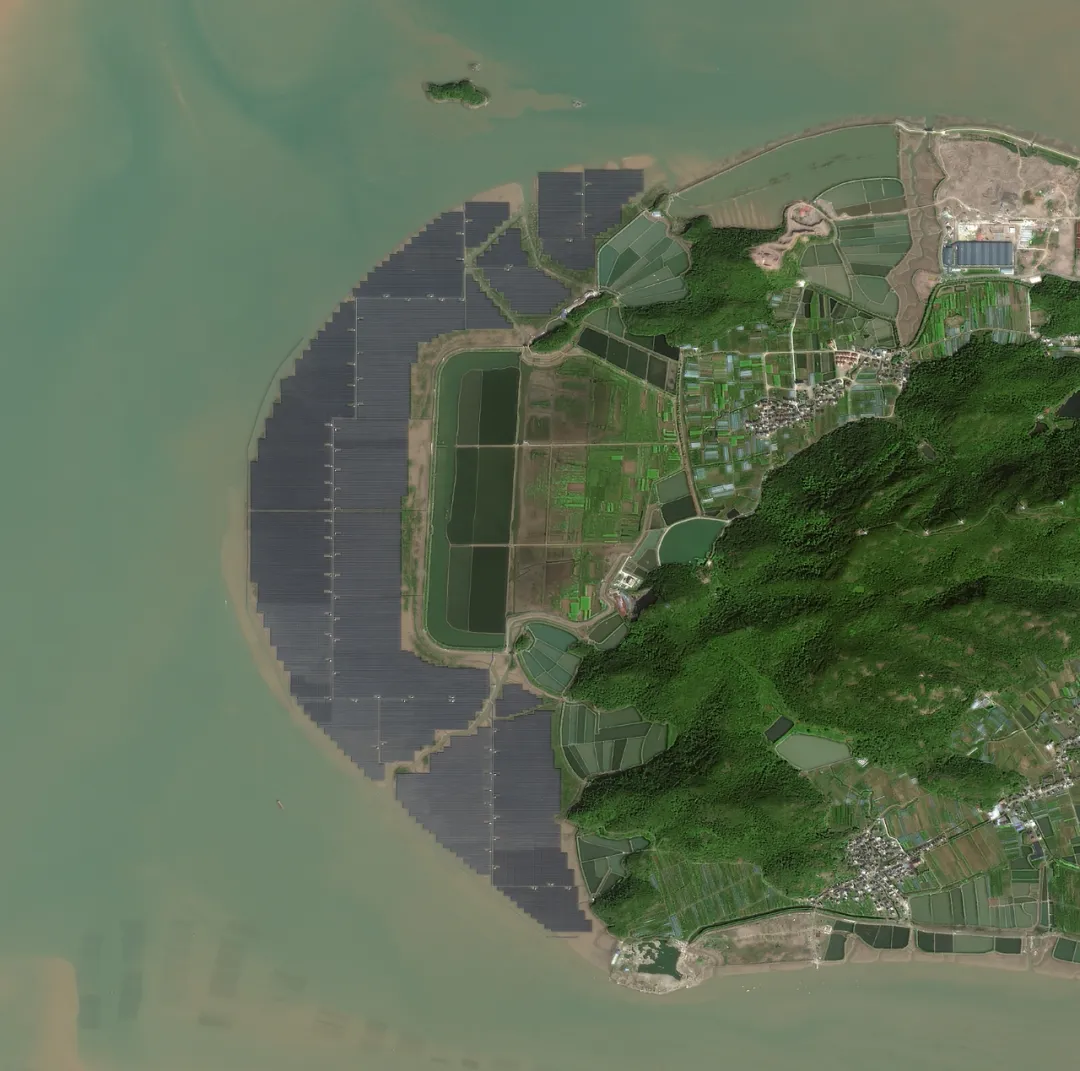
Datang Changdatu PV Power Station. (Data Source: GF-1 Satellite; Imaging Date: October 10, 2024; Image by AIR)
Located in Changdatu, Gao Tang Dao Township, Xiangshan County, Ningbo City, Zhejiang Province, this is one of China’s largest PV power plants on tidal flats outside coastal dikes. Its innovative "fishing-solar hybrid" model not only boosts aquaculture revenues but also promotes biodiversity conservation.
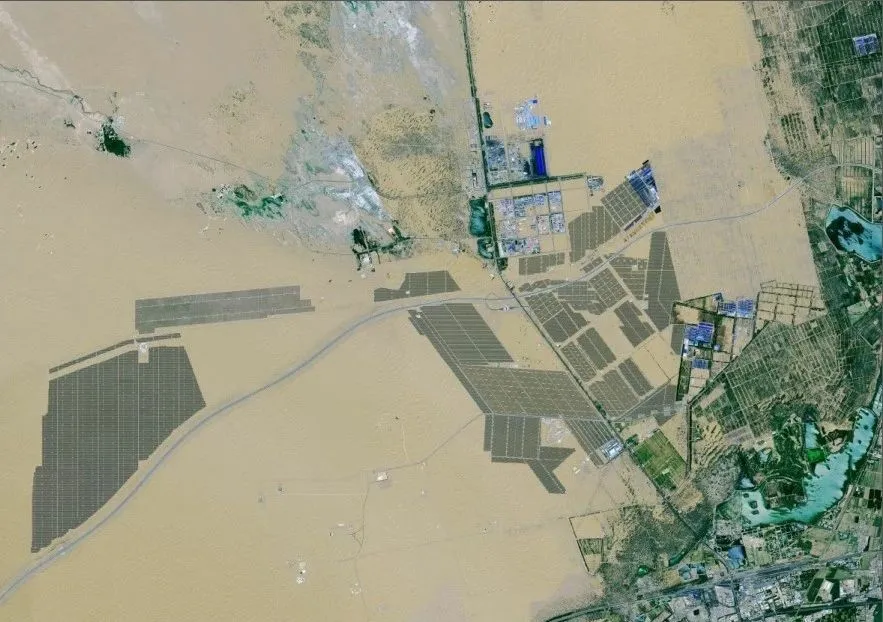
Tengger Desert Solar Park. (Data Source: GF-6 Satellite; Imaging Date: June 12, 2023; Image by AIR)
Located within the Tengger Desert in northwestern China, covering an area of 43 square kilometers with a generation capacity of 1,500 MW, it combines PV generation with desert control and water-saving agriculture, setting a precedent for desert-based PV power stations worldwide.
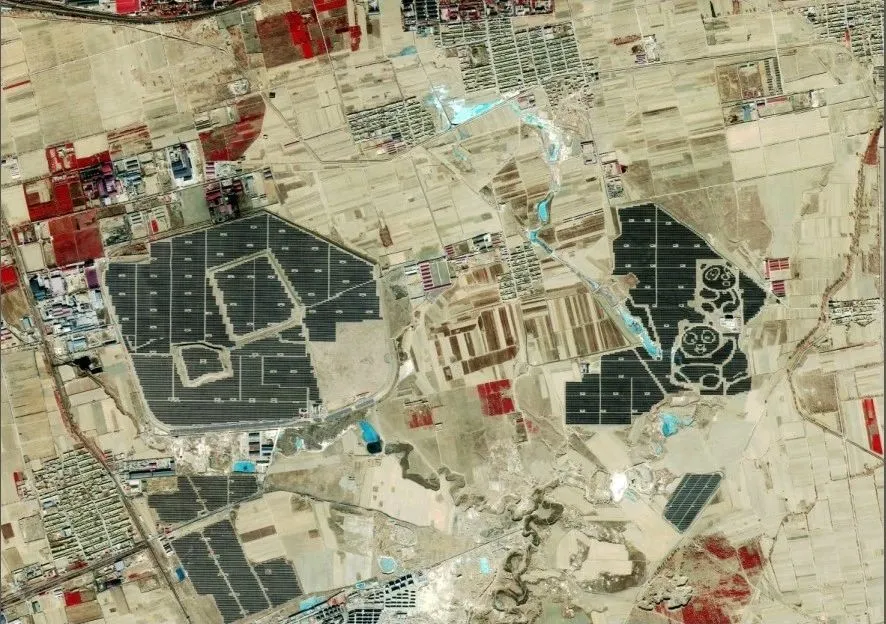
Datong Panda PV Power Station. (Data Source: GF-6 Satellite; Imaging Date: February 3, 2023; Image by AIR)
Located in Tuzhuang Village, Yunzhou District, Datong City, Shanxi Province, this station is famous for its unique panda-shaped design. The black areas consist of monocrystalline silicon solar cells, while the white areas use thin-film solar cells or transparent materials. Built on 1,851 acres of saline-alkali land, it generates 80 million kWh annually.
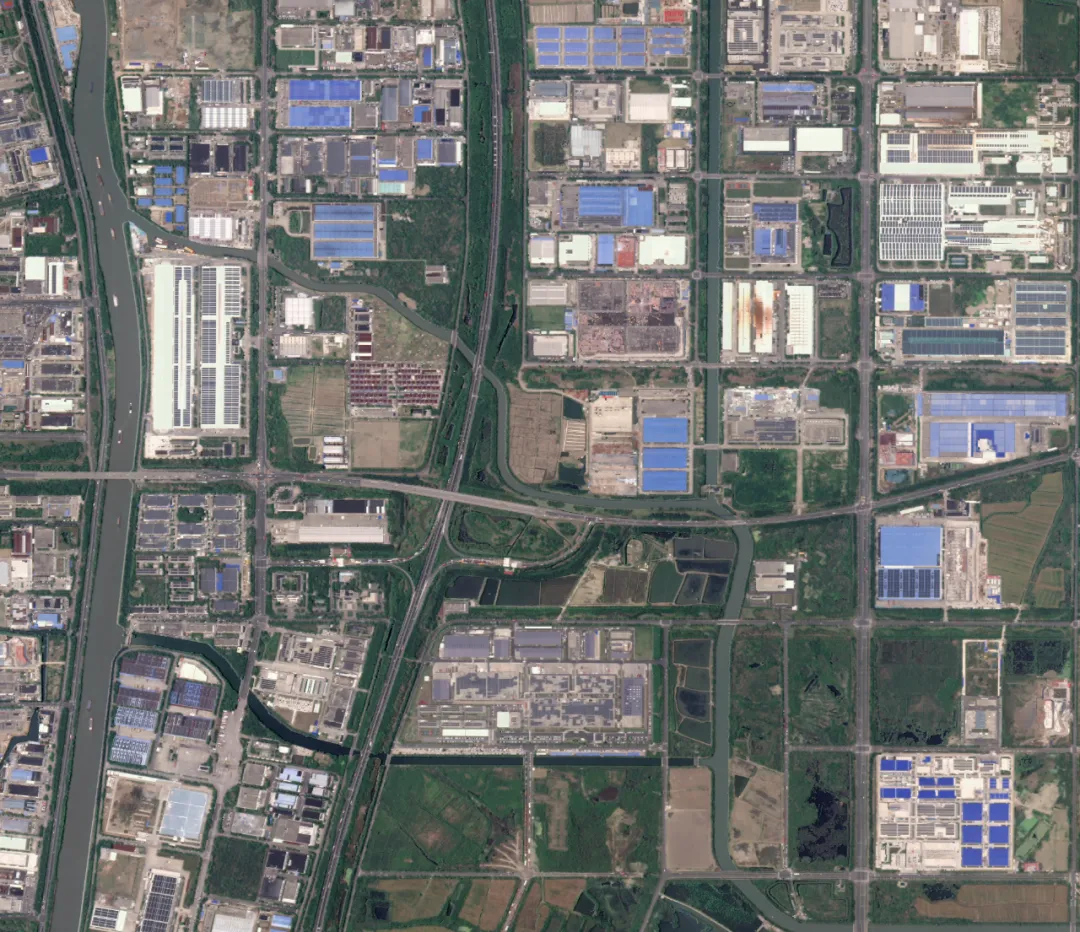
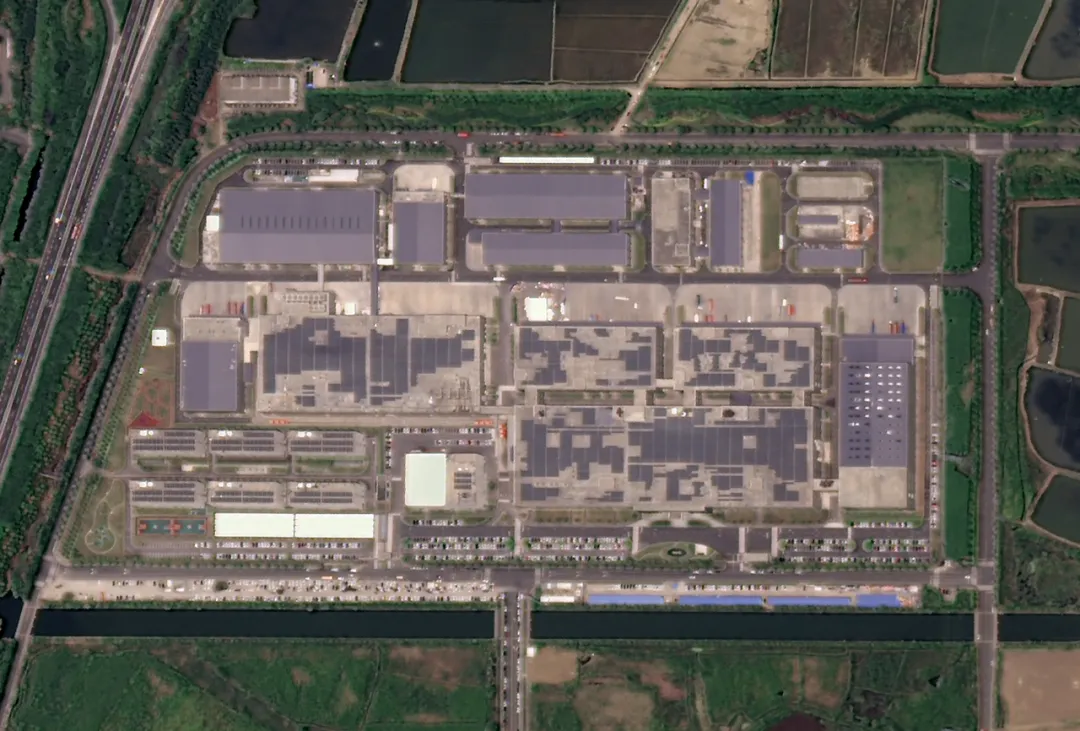
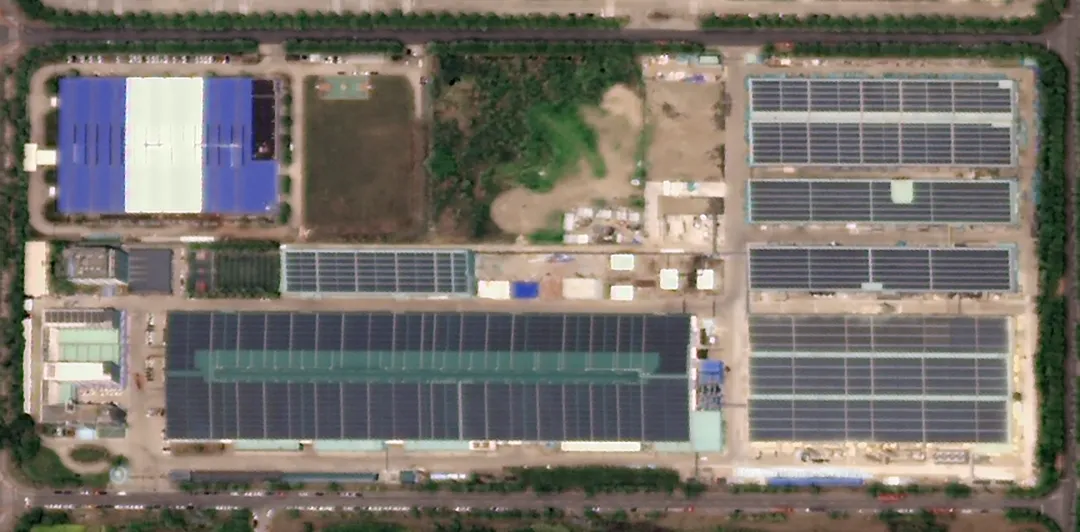
Suzhou Wujiang Economic Development Rooftop PV Project. (Data Source: GF-7 Satellite; Imaging Date: May 16, 2022; Image by AIR)
Rooftop PV applications are becoming increasingly widespread in China. Many factory zones in economically active areas have adopted rooftop PV projects, not only reducing energy costs for businesses but also becoming a highlight of regional energy transition and green development.



News & Events